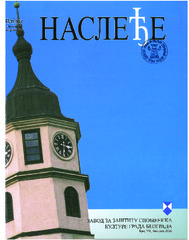| dc.description.abstract | The central headquarters of the national organization ‘Association of Engineers and Architects of Yugoslavia’ (UIJA) – the work of the architects Misa Manojlovic and Isak Azriel, built between 1933 and 1935 in Kneza Milosa street 7 – has distinguishing position in cultural topography of Belgrade. Principally, because of the fact that this building represents not only the valuable monument of Belgrade architecture between the two wars, but also an important part of ideology and culture corpus of Yugoslavianism. It is well-known that in the period between the two World Wars the UJIA was one of the most important associations which promoted ideas of ethnic egalitarianism and national "leveling". Therefore, the architectural identity, and turbulent and long history of the
construction of this organization headquarters, may be interpreted as a testimony of ideological and political roles of architecture in Belgrade during third and fourth decade of XX century. Additionally, the identity of this building reveals variety of different ideas which existed in corpus of ruling ideology of Yugoslavianism. Therefore, the activities concerning the construction of the house of this national association, which commenced in following periods - 1923, 1931 and 1933-35, basically may be interpreted as a part of global procedure of creation of visual representations of Yugoslav national and cultural identity and they can hardly be considered out of ideological point of view. Different designs for the UIJA headquarters (designs of Milan Zlokovic, Dusan Babic, couple of authors Manojlovic-Azriel, and interventions of Dragisa Brasovan) may be considered out of usual biographical or poetic focus and interpreted in relevant historical and cultural context as a part of political culture of Belgrade between the two wars. In this way, historical and architectural value of UJIA house becomes even more visible, and hereby even a need for more comprehensive valorisation of this monument of Belgrade architecture. | en |

